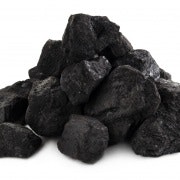Geology matters when storing carbon
For all the promise of carbon capture and storage to reduce carbon dioxide emissions, the technique faces an uphill battle to becoming widely adopted. That's because like most things, carbon capture and storage – also known as CCS – does not fit well into any one-size-fits-all formula.
A recent study looked at three prominent CCS sites to see how they responded to the process, and the results suggest that environmental engineers need to be extra careful when selecting locations for storing the gas securely.
At a sufficiently large scale, CCS is a technique that may allow power plants to operate without adding greenhouse gases to the atmosphere – though so far, policy and regulatory hurdles and high costs have prevented that scale from becoming a reality. CCS efforts capture emissions at their source and inject them into an underground reservoir of porous rock.
Current CCS technology could lower carbon dioxide emissions by 80 to 90 per cent. For a typical 500-megawatt coal power plant, that’s the equivalent of planting an extra 62 million trees and leaving them to grow for 10 years, according to the Environmental Protection Agency.
"In reality, we know that it is technically feasible to put several million (metric) tonnes of carbon dioxide in the ground and have it stay there," said James Verdon, the study's lead author and a research fellow at the University of Bristol in the UK, in an email. "But not all sites will be successful."
Leakage is a central concern, with critics concerned that continuous leakage will undermine any climate mitigation that might have come from CCS in the first place. Many point to the disaster in Lake Nyos, Cameroon in 1986, when a naturally released cloud of carbon dioxide asphyxiated 1,700 people and 3,200 animals, as a sign of the serious local risks CCS also poses.
For the study, published in the Proceedings of the National Academy of Sciences, Verdon and his colleagues examined three commercial-scale CCS sites that receive upwards of 1 megaton of carbon dioxide injection per year, and thus represent some of the world’s largest-scale CCS projects, to see how they reacted to having gas pumped underground. The sites include the Sleipner Field in the North Sea, the Weyburn Field in Canada, and the In Salah Field in Algeria.
The In Salah site turned out to be a questionable site for carbon injection. Its rocks have low permeability, which led engineers to ‘push’ carbon dioxide into the Earth harder to ensure that the rocks soak it up. However, using higher pressure at injection points has caused fracturing and uplift of several centimeters.
The Weyburn site has proven to be something of a middle ground: 45 years of oil production before its first carbon dioxide injection mean there’s extra space to store the gas underground. However, numerous stress changes to the site caused by water and carbon dioxide injection occurring simultaneously with oil production have led to counterintuitive locations for small seismic events: at Weyburn, these events occur in production wells rather than injection sites – rather than the other way around – because previous activity has altered how stress changes around the reservoir upon production or injection.
In contrast, Sleipner showed hardly any fracturing or uplift because the reservoir where carbon dioxide is being pumped is large enough to provide ample space for the gas to move in without disturbing the land above it.
The researchers' characterisation of the three fields adds an important dimension to the debate. Indeed, Vernon and his colleagues found motivation for their work in a 2012 Proceedings of the National Academy of Sciences paper that criticized the strategy, arguing that forcing gas into the brittle rocks of the Earth's interior would cause earthquakes that could then breach seals and bring the gas back to the earth's surface. The more recent investigation of three CCS sites suggests that appropriate locations do exist. Scale is still one of the main issues going forward, Vernon said.
"For CCS to make a dent on global carbon dioxide emissions, we need to be storing billions of tonnes of CO2 a year," Vernon said, adding that such a sizable need for storage means some failure is inevitable.
To limit such failures, CCS initiatives will need to conduct detailed appraisals of each site before gas injection and ensure comprehensive monitoring thereafter, according to Donald White, one of the study’s co-authors and a Geological Survey of Canada senior research scientist. White sees studies like this one as part of an ongoing effort to help define what "adequate" characterisation and monitoring should look like.
This article was first published by Climate Central. Republished with permission.













